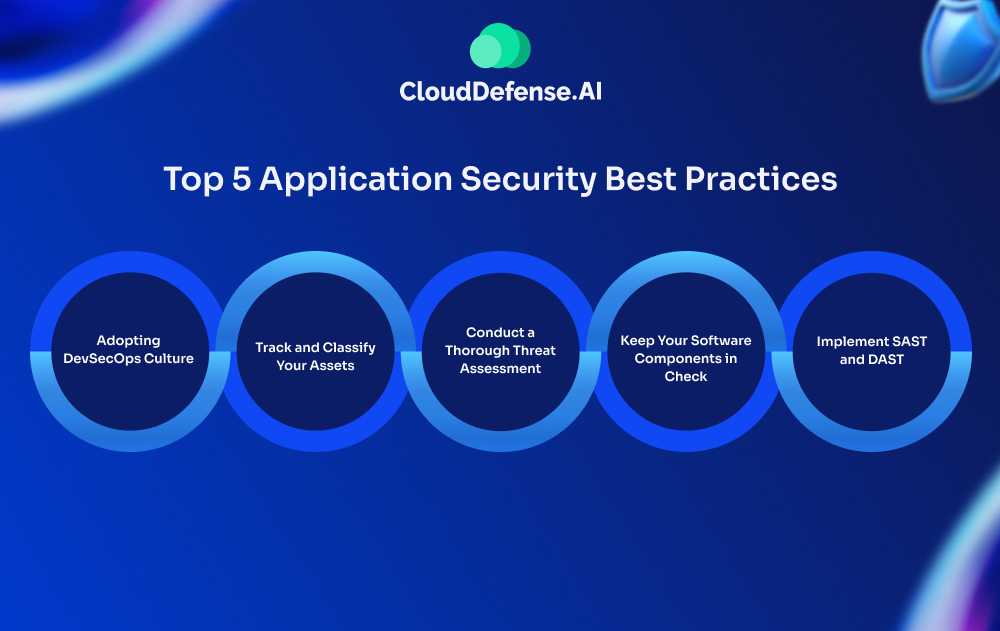The risks surrounding application security are no longer hypothetical—they’re a harsh reality. Every line of code you write could be an entry point for a cyberattack. With breaches making headlines almost daily, the importance of securing your applications has never been clearer.
But what steps are you taking to protect your software? Keep reading as this article discusses the top 7 application security best practices that will help you secure your applications against sophisticated threats. Let’s get into the essentials you can’t afford to overlook.
Why Should You Prioritize Application Security?
Did you know that web applications are the top asset involved in 60% of data breaches, making them prime targets for cybercriminals? They’re also the third most common gateway for ransomware attacks. Even more shocking, half of all organizations faced over 39 web application attacks in just the past year.
Let that sink in for a moment. We’re not talking about a few isolated incidents here. We’re looking at a widespread, persistent threat that’s targeting businesses left and right. And it’s not just the big players getting hit—small and medium-sized companies are just as vulnerable, if not more so.
So why should you care? Simple. Your application could be next on a hacker’s hit list. Whether you’re running an e-commerce site, a social media platform, or a simple blog, if you’ve got a web application, you’ve got a potential target on your back.
But here’s the good news: you’re not helpless. Once you start prioritizing application security, you can significantly reduce your risk of becoming another statistic. And it’s not just about protecting your data – it’s about safeguarding your reputation, your customers’ trust, and ultimately, your bottom line.
Top 5 Application Security Best Practices

Here’s a rundown of seven essential strategies to beef up security in your apps, minimize risks, and keep your organization safe from threats.
1. Adopting DevSecOps Culture
DevSecOps integrates security practices into the development process from the start. It’s about identifying and addressing security issues throughout the entire software development lifecycle. Instead of leaving security checks till the end, you’re doing them constantly. Your dev team, ops people, and security folks all work together throughout the whole process.
For instance, imagine you’re building a new feature for your app. With DevSecOps, you’re not just coding and moving on. You’re running security scans, doing threat modeling, and considering potential risks at every step. This way, if there’s a security flaw in your design or code, you catch it right away – not weeks or months later when it’s much harder (and more expensive) to fix.
Here’s what you get with DevSecOps:
- Spot security problems before they blow up
- Fix issues quicker and cheaper
- Improves overall software quality
- Speed up delivering secure software
Switching to DevSecOps might feel like a hassle at first. You’ll need to change how your team works and thinks about security. But trust me, it pays off. You’ll end up with more secure apps, fewer last-minute panic fixes, and a team that’s more clued up about security overall.
2. Track and Classify Your Assets
Now, let’s talk about a crucial practice that’s often overlooked: keeping tabs on your digital assets. It might sound boring, but trust me, it’s absolutely vital.
Think about it this way: how can you protect something if you don’t even know it exists? It’s like trying to guard a house when you’re not sure how many doors or windows it has. You need to know what you’re working with.
This means having a clear picture of:
- Which servers are running what
- What open-source components are in your web apps
- The dependencies of these components
Now, you might be thinking, “Is this really that big a deal?” Well, let me tell you a story about Equifax. They learned this lesson the hard way, and it cost them a whopping $700 million. Why? They didn’t patch a vulnerable component in one of their web portals because they didn’t even know it was there. This oversight led to a massive data breach affecting over 145 million customers.
So, how do you avoid this kind of nightmare? Automate your asset tracking as much as possible. As your organization grows, keeping track manually becomes like trying to count grains of sand on a beach—it’s just not feasible.
But don’t stop at just listing your assets. Take it a step further and classify them. Figure out which ones are critical to your business and which are less important. The more you know about your digital front, the better equipped you are to defend it.
3. Conduct a Thorough Threat Assessment
Alright, now that we’ve got a handle on what we’re protecting, it’s time to figure out what we’re up against. This is where comprehensive threat assessment helps.
Think of this step as being in hackers shoes. You need to anticipate their moves before they make them. Ask yourself:
- What paths could an attacker use to break into your application?
- Do you already have defenses in place to spot or stop an attack?
- Are there gaps in your security that need plugging?
These questions are crucial, but here’s the thing: you’ve got to be realistic. No matter how many locks you put on the door, there’s always a chance someone might find a way in. The goal isn’t to be unhackable, but to be resilient and prepared.
Also, consider what your team can actually maintain. There’s no point in setting up Fort Knox-level security if your developers are going to ignore it because it’s too cumbersome. Security should enhance your work, not hinder it.
When you’re assessing risks, use this simple formula:
Risk = Probability of Attack x Impact of Attack.
This means you assess how likely an attack is and then consider the potential damage it could cause. The result helps you prioritize which risks to address first. A highly likely attack with minimal impact might be less urgent than a less probable one that could tank your business.
4. Keep Your Software Components in Check
Nowadays, we rarely build everything from scratch. We often use open-source libraries, third-party components, and various dependencies to build our applications faster and more efficiently. But with all these pieces in play, it’s crucial to know exactly what’s in your software. That’s where Software Composition Analysis (SCA) comes into play.
It scans your entire application, looking at all the components you’re using, and gives you a detailed report. It tells you:
- What open-source components you’re using
- If any of these components have known vulnerabilities
- Whether you’re using the most up-to-date versions
- If there are any licensing issues you need to be aware of
Why is this important? Well, remember our Equifax example? That happened because of a vulnerable component they didn’t even know they were using. SCA helps prevent that kind of oversight.
But it’s not just about avoiding disasters. SCA can also help you:
- Make informed decisions about which components to use
- Keep your software up-to-date and secure
- Ensure you’re complying with open-source licenses
Implementing SCA might seem like adding another task to your already busy development process. But think of it as an investment in your application’s health and longevity. It’s like regular check-ups for your software. By using SCA, you’re not just building an application – you’re building a secure, well-understood application.
5. Implement SAST and DAST:
Alright, let’s talk about two crucial tools in the world of application security that can significantly boost your security game.: SAST and DAST.
SAST stands for Static Application Security Testing. It looks at your source code without actually running the program, hunting for potential security issues. It’s great at catching things early in the development process, before your code even hits production.
DAST, on the other hand, is Dynamic Application Security Testing. It tests your application while it’s running, trying to find vulnerabilities that might only show up when the app is in action.
Now, you might be wondering, “Do I really need both?” The answer is a resounding yes. Here’s why:
SAST is great at catching issues early in the development process. It can spot potential problems in your code that might not be obvious when the app is running. For instance, it might catch a poorly implemented encryption function or a hard-coded password.
DAST, on the other hand, can find issues that only pop up when the application is actually running. It might discover a vulnerability in how your app handles user input or a flaw in your authentication process.
Using both gives you a more complete picture of your application’s security. They can catch vulnerabilities that might otherwise slip through the cracks, potentially saving you from costly breaches down the line.
Final Words
When it comes to application security, there’s no room for shortcuts. From adopting a DevSecOps approach to keeping your software components in check, every step you take towards better security matters. With threats evolving and attacks becoming more sophisticated, staying ahead requires a good strategy.
At CloudDefense.AI, we’ve got your back with top-notch security tools like SAST, DAST, SCA, and IaC scanning. Our comprehensive code-to-cloud suite ensures that your applications are secure from every angle, giving you peace of mind and letting you focus on what you do best.
Don’t wait for a breach to force your hand. Get ahead and see how CloudDefense.AI can elevate your security posture. Book a demo with us today and see these solutions in action!







